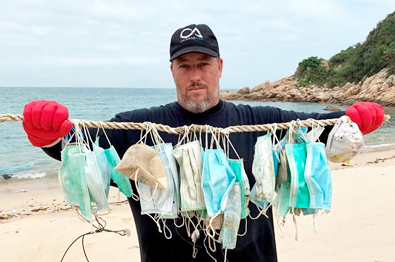The lockdown of the whole of Luzon, which includes Metro Manila, was announced on 16-March-2020. It was to control the movement of over 60 million people in the North of the Philippines to stop or hinder the spread of the deadly CoVID-19 pandemic. In all of January and February, the Philippine had a total of 3 infections and 1 death, all of them Chinese nationals who arrived in the Philippines, together with POGO staff, before the lockdown. By mid-March, the numbers jumped exponentially and President Duterte had no choice but to declare a lockdown.
Being on Enhanced Community Quarantine (ECQ) lockdown meant that people had to stay home, wear facemasks if they walk out of their homes, frequently wash hands with soap and water, and constantly disinfect surfaces. No one was allowed to leave their “Barangay” or town zone. All public vehicles were ordered to stop operations. This included buses, cabs, jeepneys, tricycles, ships, and airplanes. Motorcyclists were not allowed to have a back-rider in observance of the “safe distancing” rule. It was extremely difficult for people to even get to the grocery if they did not own a car. And, hard as it is, only one person from each household was allowed to leave their premises. That person would need an identification card authorized by the Barangay. This ID requirement was to be the only ID accepted and checked by the police and military checkpoints. But how to get an ID from the Barangay Hall without a car was a catch-22 for many.
Even within the first week of just lazing around in the house, I felt more anxious about the duration of the lockdown because I was sure the virus would neither be quashed within the first 2-weeks of lockdown, nor the whole 3 months of lockdown for that matter. Even one year later, by 16-March-2021, without a working vaccine, it means it would still be dangerous to go out.
But mother nature has a way of rebounding with a little help. As a direct positive impact of the lockdowns in Luzon, with almost all the roads empty, including EDSA, which is notorious for having the worst traffic congestion, the ghostly streets translate to reduced pollution from car emissions resulting in better air quality for the human lungs. With the dwindling of road traffic and air traffic, the skylines of city buildings became clearer, and distant mountains like the Sierra Madre suddenly became visible to city dwellers. Significant reductions in air pollution and greenhouse gas emissions (GHG) occurred. Air pollution dropped by 180% due to the lockdown imposed in Metro-Manila, according to the Environmental Pollution Studies Laboratory of The Institute of Environmental Science and Meteorology.
How could we make air quality improvements permanent? We could phase out old models of transport and replace them with electric-powered: cars, motorcycles, jeepneys, tricycles, buses, and trains. This move alone would eliminate tail pipe emissions such as NO2. Transportation vehicles running on fossil fuel or diesel could also be replaced with electric cars or cars running on renewable energy or low carbon fuel like LNG and CNG. Emissions mostly come from road transport and power plants that exacerbate respiratory illnesses like asthma, and make symptoms worse for those already with existing lung or heart conditions. Thus, the need to shift to low carbon fuel to counter the huge number fossil fueled-cars on the roads.
It is ironic that by locking down Luzon, the virus has helped reduce a respiratory health crisis since the virus attacks specifically the lungs first. The lockdown has shown us how clean air looks and feels with less air pollution. The virus has shown that pollution lowers resistance to disease. More exposure to car traffic fumes of Carbon Monoxide means weaker lungs and a greater risk of catching the deadly virus.
The World Health Organization estimates (a) about 3 million people world-wide die each year from ailments caused by air pollution, and (b) more than 80% of people living in urban areas are exposed to air quality levels that exceed safe limits. The situation is worse in low-income countries, where 98% of cities fail to meet WHO air quality standards.
I hope that our government and private sector would consider finding ways in making this air quality improvement a permanent feature, and build on top of this temporary public good that we achieved during the lockdown.
Not all environmental impacts of the lockdowns have been positive, particularly in the waste management sector. Volumes of unrecyclable waste have risen as consumers increased orders of take-away food delivered with single-use packaging and plastic utensils. All these garbage, particularly disposable facemasks and gloves, have managed to show up and pollute our rivers and oceans. As we focused on protecting ourselves against the virus, we forgot to protect our rivers, seas, and oceans.
In the maritime sector, natural ecosystems in marine conservation zones have been put at risk when staffs were required to stay home during lockdown, leaving these areas unmonitored. Their absence has resulted in the rise of IUU Fishing. Maritime transport emissions account for 2.5% of global emissions. Nevertheless, GHG emissions from vessels surely have plunged due to idle shipping operations, as a result of factory shutdowns during the CoVID-19 lockdowns worldwide.
Let us push for a focus on the greening of cars, ships, jobs and the lower carbon fuel sources for cleaner air and water. If there is no political pressure on the government, the country will go back to business-as-usual levels of congestion in our main roads, side roads, and waterways, rather than transcend to a cleaner and healthier way of life for the Philippine populace and the next generations to savor.
